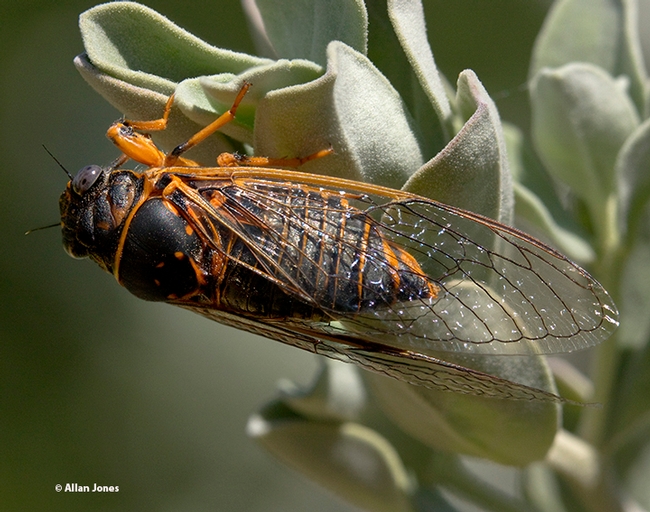Scientists say that within several weeks, trillions of cicadas from Brood X will emerge in 15 eastern-central states of our nation, from Georgia to New York.
These periodical circadas have spent the last 17 years underground feeding and growing, and growing and feeding and soon they will tunnel out and emerge together in what some call a "synchronous emergence."
Scientists will be delighted. The cicadas will call for mates; the squeamish will recoil at the numbers and sounds; and predators will eat their fill.
"Nearly 3,400 species of cicadas exist worldwide," according to a May 10th article in Scientific American. "But periodical cicadas that emerge en masse once every 17 or 13 years are unique to the eastern U.S. The 17-year cicadas live in the North, and the 13-year cicadas are found in the South and the Mississippi Valley. The three species of 17-year cicadas—Magicicada septendecim, M. cassinii and M. septendecula—form mixed-species cohorts called broods whose members arise like clockwork on the same schedule. The broods are identified by Roman numerals. Brood X is the largest of the 12 broods of 17-year cicadas, which emerge in different years."
Nature photographer Allan Jones of Davis says he expects "to hear quite a bit about cicadas emerging back East soon."
"I do not see cicadas often around here, but one flew by me several years ago in the Ruth Risdon Storer Garden (UC Davis Arboretum and Public Garden) and lit in the Ranger Sage." That was on June 7, 2011.
Community ecologist Louie Yang, associate professor, UC Davis Department of Entomology and Nematology (he goes by the name of "cicadachaser" on Twitter), commented: "I don't know the western cicadas well, but that appears to be Okanagana arboraria."
Yang recently (April 29) presented a seminar to Georgetown University's Biology Department on his research on cicada emergence as a resource pulse in local ecosystems.
California is home to some 65 species of cicadas. Worldwide, "there are more than 3,000 species of cicadas, which fall into roughly two categories: annual cicadas, which are spotted every year, and periodical cicadas, which spend most of their lives underground and only emerge once every decade or two, according to National Geographic.
The Bohart Museum of Entomology at UC Davis (temporarily closed due to the COVID-19 pandemic) has scores of cicada specimens, according to director Lynn Kimsey, UC Davis distinguished professor of entomology.
I have one. My mother, who grew up on a West Texas ranch, left one in her estate. She tucked it into a little box labeled "Texas bug." No one knows when or where she found it, but it measures two-and-a-half inches long and an inch wide.
What we do know is that the cicada is considered one of the world's loudest insects. "The chirping and clicking noises of the male cicada are actually a species-specific mating call that can be heard by females up to a mile (1.6 kilometers) away," according to LiveScience in its piece on "Why Do Cicacas Sing."
Wish we were there...
Attached Images:
